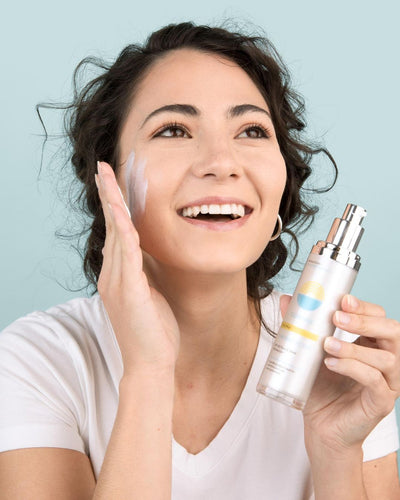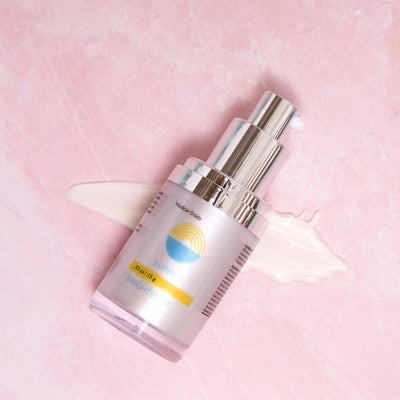Scars are a natural part of life in every sense of the word. Everyone has a scar– you included! So why do we get unsightly scars? And what can we do about these skin conditions?
Scars are a part of the body that indicates the location of an original wound. When the body attempts to regenerate tissue, replacing the old, damaged tissue, a scar results.
Overview
Scars are a natural part of healing--when an injury heals, a scar is a physical result.
Scars vary in appearance based on the cause of the wound. Large scars can cause anxiety, depression, and distress. There are mental health effects to scarring because the scarred individual often feels uncomfortable with the disfiguring nature of the scars.
However, it is important to remember that scarring is a natural process, and there are things you can do to prevent scars.
Continue reading for everything you ever wanted to know about scars, including how to get rid of them, once and for all.
What causes scarring?
Injuries to the tissue cause scarring. The chance of scarring increases with improper wound care during the wound healing process. For example, if a wound is not cleaned or covered during wound healing, the chances of scar formation increase. Scars occur when the body attempts to repair itself with increased collagen production. If inadequate wound care or covering happens, scar formation is more likely.
What is scarring in the body?
A scar is a natural process that happens when the body heals an injury by increasing collagen production to the area in question. Collagen production in the dermis increases where skin injury is present to help heal and strengthen the tissue. Scarring in the body is the natural process of the body healing itself.
Types of Scars
There are numerous types of scars with varying causes and severity. Chickenpox, acne, piercing, and vaccination can cause scars.
Scars are part of your body’s natural healing process and are a mechanism of tissue restoration.
Post-surgical scars
As implied by the name, post-surgical scars result from incisions of surgical procedures. Every invasive surgery results in some type of scar. Scar formation following surgery occurs in multiple stages.
- Immediately after a surgeon closes a wound, the body reacts through clotting-- this occurs for a week after surgical procedures.
- Next, fibrous tissue forms from collagen and elastin in the dermis. The amount of collagen production informs the size of the scar.
- Finally, a lower layer of the skin reconstructs and heals, regenerating tissue with a lighter, softer, less sensitive tissue in place of the old.
Acne scars
Acne scars often come from a pimple that pops prematurely. Severe pimples or acne can result in pitted scars. Pitted scars appear to be a dent in the skin. A dented skin is also known as an atrophic scar. Atrophic acne scars occur when the body is not able to regenerate skin.
Stretch marks
Stretch Marks come from weight changes due to pregnancy or weight gain. When the body gains weight quickly, the skin stretches out, and the body reacts. The result is stretch marks, a form of scars.
Keloid Scars
Keloids are an overgrowth of tissue when collagen continues to produce after an injury heals. This results in raised scars which eventually flatten when collagen production slows down.
Hypertrophic Scars
Hypertrophic scars resemble keloid scars but do not grow beyond the boundaries of the injury. A hypertrophic scar features an overgrowth in collagen that eventually stops growing.
Types of Scar Treatments
There are different types of scar treatments, each with circumstances that application is most successful.
Topical silicone gel or silicone gel sheets
The main ingredient in silicone gel sheets is silicone which protects the scar from bacteria-induced collagen. Silicone gel also regulates fibroblast production which reduces collagen and results in a flatter scar.
Pressure dressings
Some patients apply pressure to the scar using a specially formulated tool that compresses the scar. Pressure devices are useful for four to six months with unclear results.
Steroids
Steroid injection occurs into scar tissue, reducing itching, burning, and shrinking the appearance of a scar.
Skin camouflage (makeup)
Skin camouflage via makeup does not reduce the inflammation from a scar-- it merely masks the problem. Some people wish to camouflage a scar while it heals, hiding the appearance as much as possible.
Surgery
Surgery can occur on keloid and hypertrophic scars that are severe. This option is not extremely popular as keloid regrowth can occur. Scar revision surgery reopens a wound and alters the shape of a scar.
Laser Therapy
There are different kinds of laser therapy treatments that can flatten skin and remove discoloration present in scars. A pulsed dye laser is a form of laser resurfacing that reduces the appearance of scars. Laser resurfacing flattens the skin, minimizing scars.
Microdermabrasion
This dermabrasion process removes a thin layer of skin and is good for fine lines, minor scars, wrinkles, and age spots. A dermatologist can do dermabrasion treatments.
How to Care For a Scar
The best way to care for a scar is to practice excellent wound care. Effective wound care means keeping a wound clean and dressing it properly. Wound care protects existing scabs and reduces the chances of reinjury. If a scar is already present, keep it out of the sun. Another scar care tip is to keep the area moist so it does not harden.
Preventative care will stop a wound from turning into a scar, and scar management care will reduce the appearance of a scar.
Best Ingredients for Scar Care
The best ingredients for scar care vary based on the type of scar. For example, retinoids and hyaluronic acid are typical ingredients for stretch marks scar care. Retinoids reduce fine lines and the appearance of scars. Hyaluronic acid is a common ingredient in skincare that promotes collagen production, the regeneration of skin, and scar reduction.
Vitamin E and cocoa butter are additions to scar care products for their moisturizing and repairing abilities.
How Do Over The Counter Scar Care Products Work
Most over-the-counter scar care products contain a topical antibiotic, wound irrigants, and wound antiseptic. Topical antibiotics and wound antiseptics reduce the chance of infection and minimize the risk of a scar. Wound irrigants flush out the injury, leaving it less susceptible to infection.
Best Products for Scar Care
There are a few products to have in your toolbox for scar care. These products protect the skin from bacteria and reinjury, promoting anti-inflammatory behavior.
ScarSmooth
ScarSmooth is a medical-grade silicone tape that acts as the skin barrier and helps with scar care. You can reuse the peelable, pain-free tape. ScarSmooth uses silicone gel to reduce the appearance of scars on the skin.
Medihoney Gel
Medihoney contains manuka honey, a natural antibacterial ingredient that prevents infection and moisturizes scars.
Derma E scar gel
Derma E scar gel is a skincare choice for sunburns, chemical burns, old scars, and stretch marks. The scar gel contains beta-alanine and allicin, which moisturize and lighten the appearance of a scar.
Mederma
Mederma is a scar gel that helps diminish the appearance of new and old scars with Allantoin. There are also cream formulations that you can use.
The Latest Insights & Analysis about Scar Care
Skincare and scar treatment is ever-evolving, with new techniques and methodologies constantly emerging.
Corticosteroid injections and gels reduce scars through anti-inflammatory mechanisms.
Cryotherapy and steroids work together to reduce the appearance of keloids and hypertrophic scars.
Fat Grafting is an emerging therapy that transfers fat into or underneath the wound, useful in hypertrophic scarring. This is a treatment option that is also known as skin grafting.
Botox reduces the formation of scars by reducing muscle pressure that can lead to scarring. A reduction in tension is the result of botox treatments.
Interferon is an injection that affects collagen synthesis and production. A side effect of this treatment is flu-like symptoms and soreness at the injection site.
Pressure therapy limits the oxygen and nutrients the body delivers to an injury site. It occurs for at least six months and reduces the appearance of scarring.
Conclusion
Scarring is part of the healing process and is your body restoring tissue while keeping out bacteria. The psychological and mental impacts of scars can be devastating as the disfiguring nature of scars affects a person’s self-esteem. There are ways to reduce scars, but the best thing to do is avoid them.
The best way to avoid scarring is through proper wound care and skincare. Proper wound care includes applying topical antibiotics and keeping the wound clean. Scabs should have a covering so that the re-injury risk is minimal.
If scar avoidance is not possible, you can reduce the appearance of scars with products like silicone gel sheets and topical antibiotics. Scar treatment products aim to heal old scars and new scars. Scar treatments reduce the appearance of scars by lightening hyperpigmentation and resurfacing the skin so that scars do not appear raised.
Sign up for Sunnie Skin to try a state-of-the-art scar treatment.




